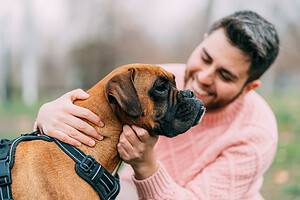If your dog has pronounced overbites or underbites or if their teeth are misaligned, you may be curious if dog braces might help. Yes, dogs can get braces! Canine braces have been utilized for many years to address our canine friends’ severe orthodontic problems.
Although some pet parents may find it amusing, dog braces can allow dogs with severe biting problems and orthodontic misalignment to bite and eat regularly. Something they were unable to do before treatment.
If your dog has pronounced overbites or underbites, or if their teeth are misaligned, you may be curious if dog braces might help. Canine braces have been utilized for many years to address our canine friends’ severe orthodontic problems.
Although some pet parents may find it amusing, dog braces can allow dogs with severe biting problems and orthodontic misalignment to bite and eat regularly, which they were unable to do before treatment.

Canine braces can be used to treat several dental issues.
©ARTSILENSE/Shutterstock.com
Reasons Dogs Need Braces
Canine braces can be used to treat several dental issues. These include overcrowded teeth, crooked teeth, and lance teeth, which are upper canine teeth that unnaturally point upward instead of downward. Dogs with the following other conditions have received braces treatment:
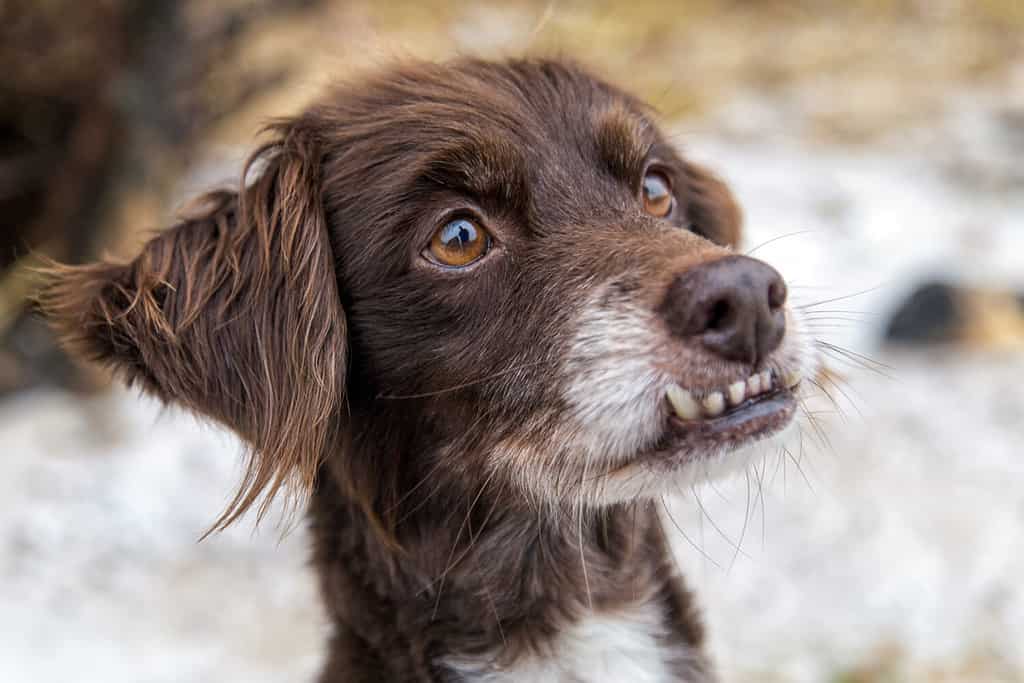
An overbite can happen when the top jaw is longer than the lower jaw.
©Christian Kaehler/Shutterstock.com
Baby Teeth
Baby teeth that don’t fall out in dogs can cause dental crowding, biting problems, and periodontal disease. Make an appointment with your vet as soon as you can if you see a problematic decaying tooth in your puppy’s mouth.
Persistent deciduous teeth generally need to be excised as soon as possible. Braces prevent the secondary issues that arise with the erupting irreversible counterpart.
Overbites
An overbite can happen when the top jaw is longer than the lower jaw. Although your dog’s overbite may not appear to be a major problem, badly misaligned teeth can cause bruising and bleeding of the gums, foul breath, and a variety of dental issues, including gingivitis and tooth rot.
Linguoversion
This is a syndrome when one or both of the lower jaw’s canines grow under the gums. Animals with long, slender noses, like greyhound breeds, are more likely to have linguoversion. Linguoversion irritates your pooch and makes it difficult for the mouth to close completely.
Due to their odd location, the canine teeth may project through the roof of the mouth in cases where the disease is severe. Linguoversion either entails canine extraction or orthodontic treatment with braces.
Surgical Aftercare
When a section of the jaw is surgically removed as part of cancer treatment, braces help prevent teeth from shifting.
Does My Dog Need Braces?

It’s time to visit your veterinarian if your
dog is losing his appetite
, acting timidly, over biting, or if you observe any abnormalities in their teeth.
©iStock.com/igorr1
It’s time to visit your veterinarian if your dog is losing his appetite, acting timidly, over biting, or if you observe any abnormalities in their teeth. Your veterinarian is the ideal person to ask if your dog needs braces or if there is another tooth problem.
They’ll perform a thorough physical and dental checkup and can let you know if there are any problems. Most canines who need orthodontic treatment are identified when they are young. They are typically identified between the ages of four and six months when the adult teeth erupt.
Similar to a conventional dentist, if your veterinarian discovers an issue, they may recommend a canine orthodontist veterinarian dentist to you. Even if you have reservations about dog braces, it’s always a smart idea to at least speak with a veterinary dentist. A visit will allow you to know about available choices for treatment. You can ask any questions if your dog’s mouth appears to have a problem.
Cost of Dog Braces
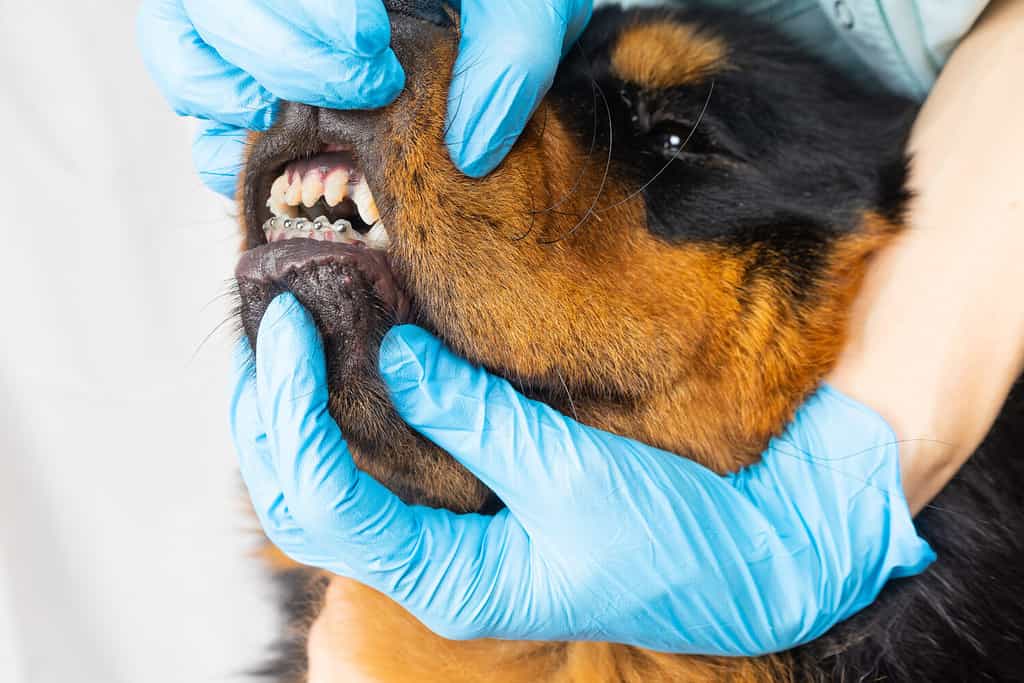
The cost of fitting braces on a dog varies depending on the size of the animal, the location of the veterinarian facility, the dog’s age and health, and other factors.
©Angurt/Shutterstock.com
As pet parents, we know going to the vet isn’t cheap. Part of owning a pet is taking on financial responsibility, including that of their health. Let’s take a look at what you can expect to pay for dog braces.
The cost of fitting braces on a dog varies depending on the size of the animal, the location of the veterinarian facility, the dog’s age and health, and other factors. Large dogs often require longer rounds of anesthesia during treatment, which increases the cost.
Dog tooth braces are predicted to cost $2,750. However, the cost might range from $1,500 to $4,000 and depending on the veterinary clinic. Dogs can have long or short muzzles, unlike humans, who all have similarly formed mouths. Because there is less variance in the form of the jaw, it is considerably simpler to estimate the cost of orthodontic treatment for people.
The cost of braces for a Rottweiler or Great Dane will not be the same as for a Chihuahua or Pekinese. The age of the animal is another important consideration. Some canines may not be in good enough health to withstand numerous rounds of anesthetic.
Additional Costs to Consider
Braces can be put on in two hours or less by a veterinary specialist. Multiple weekly or biweekly follow-up visits are necessary after the treatment. Veterinarian checkups range in price from $100 to $300 based on the clinic’s fees and whether extra work is required to address a problem.
The price will go up if your pet develops difficulties or infections as a result of the surgery. Those who live nearby will pay less compared to those who travel a long distance. Some pet owners might need to stay in motels so they can transport their animals to several follow-up visits because the treatment does not finish with the procedure.
Instead of using braces, the doctor may recommend tooth extractions to fix the bite, which could cost $600 or more. But, if infected gum tissue needs to be removed during an extraction, the cost may go up. Costs for extractions involving gum removal might exceed $2,500.
Will Pet Insurance Cover Dog Braces?
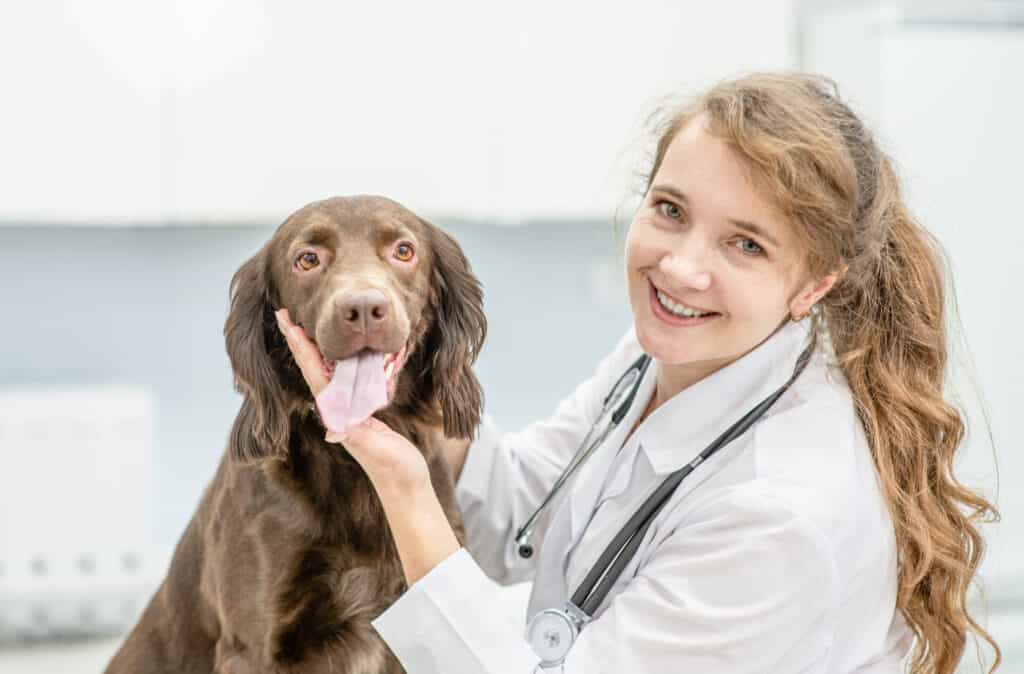
Orthodontic operations are not
covered by pet insurance
.
©Ermolaev Alexander/Shutterstock.com
Sadly, orthodontic operations are not covered by pet insurance. Most dental work is not covered by insurance carriers unless it results from an injury. Some insurers may need distinct coverage for dental procedures. You must conduct extensive research on the businesses to comprehend the charges involved.
Regular dental cleaning, extractions, or procedures needed because of a prior condition are typically not covered by insurance.
How Long Do Dogs Wear Braces?
The orthodontic treatment for dogs is significantly quicker than it is for humans. Humans frequently need to wear braces over many months or even years. The average dog only needs braces for two to three months. The extent of the recuperation depends on how effectively the therapy works.
Regular checkups from the vet will aid in the healing process, but the success of the treatment relies on the pet parent’s capacity to give their pet the proper care. Recovery could take longer if there is an infection or inflammation.
Complete recovery depends on adhering to the doctor’s recommendations for at-home care and alerting the clinic to any changes or new symptoms.
Treatment With Braces
A pooch with braces takes a lot of maintenance from the owner. The braces may break if the animal consumes hard kibble or bites on a ball or shoe. To maintain the equipment in place, the majority of pets are going to consume a soft food diet for at least a few weeks.
Dog parents must brush the teeth surrounding the braces and sterilize the surface with an oral antiseptic. Daily checks of the dog’s teeth are essential for recuperation. The veterinarian will advise routine cleaning procedures to maintain the teeth’s health once the braces are taken off.
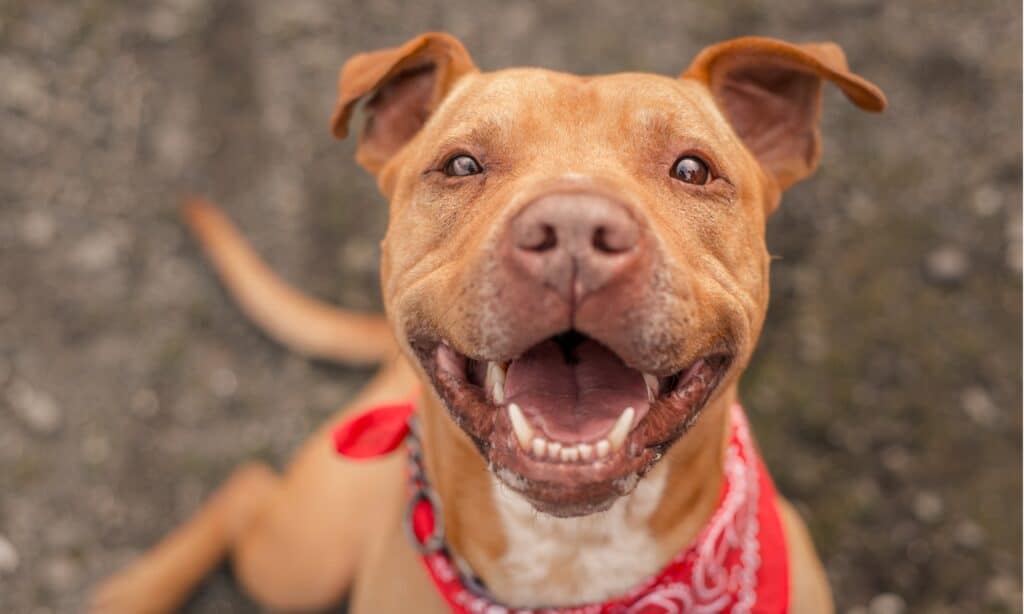
The inconvenience of the recovery phase is, however, well worth it.
©iStock.com/Photography by Adri
Final Thoughts
Although expensive, orthodontic operations can improve the dog’s bite and relieve pain brought on by irritation and grinding teeth. Some of the essential owner responsibilities include maintaining the braces and regularly brushing the dog’s teeth. Some individuals may struggle to take time off work or rearrange their schedules.
The inconvenience of the recovery phase is, however, well worth it. Dogs with strong teeth won’t experience any pain or discomfort. If the price is overwhelming, talk with your vet about financing or CareCredit.
The photo featured at the top of this post is © Happy monkey/Shutterstock.com
Ready to discover the top 10 cutest dog breeds in the entire world?
How about the fastest dogs, the largest dogs and those that are -- quite frankly -- just the kindest dogs on the planet? Each day, AZ Animals sends out lists just like this to our thousands of email subscribers. And the best part? It's FREE. Join today by entering your email below.
Thank you for reading! Have some feedback for us? Contact the AZ Animals editorial team.





